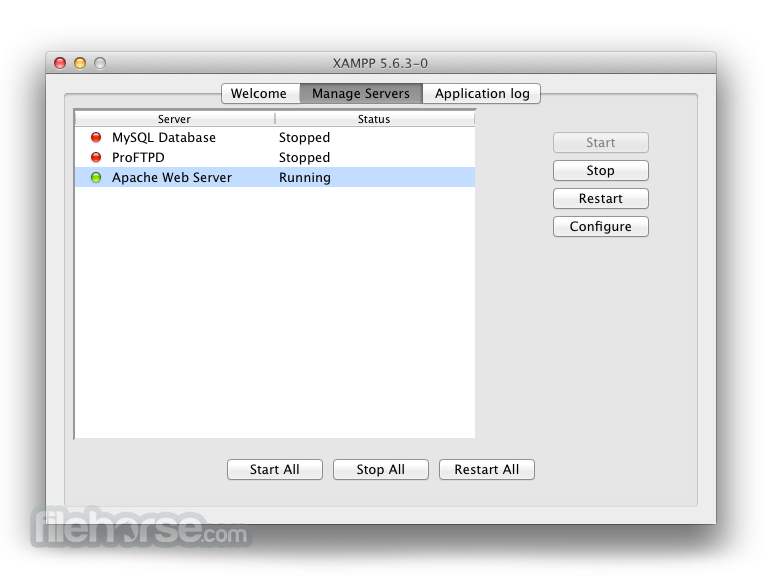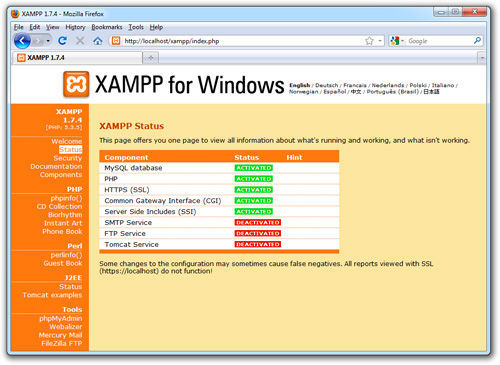

While most are familiar with the MySQL flavor of SQL, in many cases, what you get is MariaDB. SQL Database – WordPress uses a SQL database to store data. There are many different web servers available including Nginx, Apache, and IIS, with XAMPP including Apache. Web Server – The web server is what actually delivers the WordPress website. However, the server also needs a number of software packages to run WordPress. The server or hosting plan, on which all the components are installed and run, and the domain name are two things we are all familiar with. It makes it so much easier to test and tweak WordPress themes and plug-ins.WordPress needs quite a few things to run. You can do this for multiple instances of WordPress just by creating new folders in the htdocs directory. Let’s go ahead and install this… then load the page… and it looks like all went well. In my browser, I go to localhost/local-wordpress/Īnd there it is! The WordPress installation window. I’ll save this, and change the name of the file to wp-config.phpĪnd finally… let’s install WordPress. The username is “root”, and there is no password, so I’ll leave that blank.

I’m typing in the name of my database here, local-wp. So I go back to my htdocs folder, open up local-wordpress, and edit the wp-config-sample.php file. Now that’s done, I want to make sure WordPress can access the database I just created. Here, beneath “Create a Database”, I’ll type local-wp, leave everything else as is, and click Create. Over on the left sidebar, I’ll click on phpMyAdmin, which is where I administer my MySQL databases. To do this, I go into my browser, and in the URL window, type localhost/. Now, I need to create a MySQL database for this WordPress installation. I want to rename this to local dash WordPress. I’ve got a copy of the latest WordPress here, and I’m going to drag it into the htdocs folder. Back in the XAMPP folder, open up the folder named “htdocs” Simply click on “Start”… you’ll need to type in your administrator password. This is the XAMPP control window, and since we’re going to be installing WordPress, we want to get Apache and MySQL running. Now, go into your Applications folder, and open up the XAMPP application. dmg file, then install it by dragging it into your Applications folder. The first thing you want to do is download XAMPP.

Today, I want to show you how to install WordPress on your Mac, running on OSX, very quickly and easily using an application called XAMPP. That way, you can do all your testing and tweaking “locally”, without having to connect to a web host or server. If you create WordPress themes or plug-ins, one of the most useful things you can do is install WordPress on your computer.


 0 kommentar(er)
0 kommentar(er)
